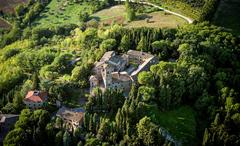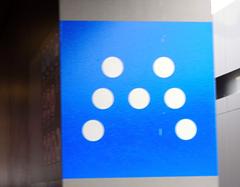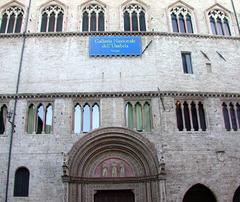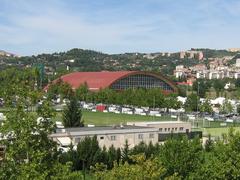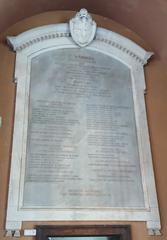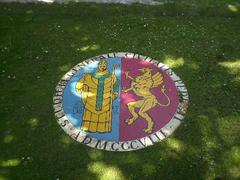Fontana Maggiore Perugia: Visiting Hours, Tickets, and Travel Guide
Date: 03/07/2025
Introduction: The Enduring Symbol of Perugia
In the heart of Perugia’s historic Piazza IV Novembre, the Fontana Maggiore stands as one of the finest surviving symbols of medieval civic pride and artistic achievement. Built between 1277 and 1278 to commemorate the completion of an aqueduct from Monte Pacciano, the fountain is more than an engineering marvel—it is a richly decorated narrative in stone, showcasing the genius of Nicola and Giovanni Pisano. With its intricate bas-reliefs, symbolic statuary, and harmonious architecture, the Fontana Maggiore continues to inspire awe, serving as both a public gathering place and a living testament to Perugia’s history and identity.
This guide delivers all the essential information for visitors—covering accessibility, guided tours, ticketing for associated museums, and practical travel tips—while offering a detailed exploration of the fountain’s history, artistry, and contemporary significance. Whether you are a history enthusiast, art lover, or casual traveler, Fontana Maggiore is a must-see highlight of central Italy (Musei Perugia, Aurica, Italia.it, Lonely Planet).
Guide Contents
- Introduction
- Historical Overview and Construction
- Artistic and Architectural Features
- Symbolic and Civic Role
- Engineering Innovations
- Preservation and Modern Use
- Practical Visitor Information (Hours, Tickets, Accessibility)
- Travel Tips & Nearby Attractions
- Frequently Asked Questions (FAQs)
- Recommendations and Summary
- Sources for Further Information
Historical Overview and Construction
Origins and Engineering Feat
Commissioned by Perugia’s civic authorities in the late 13th century, Fontana Maggiore marked the completion of a monumental aqueduct that brought fresh water uphill into the city center from Monte Pacciano. This engineering triumph was led by Boninsegna da Venezia, who implemented an advanced forced-water system, and Fra Bevignate, a Cistercian monk and renowned architect (Musei Perugia, Secret Umbria). The fountain itself became a showcase for Perugia’s prosperity and technological prowess.
Construction and Artistic Vision
Sculpted by Nicola Pisano and his son Giovanni Pisano, the fountain was conceived not just as a source of water, but as a monumental work of public art. Its two-tiered, polygonal basins—crafted from pink Assisi stone and white Carrara marble—were adorned with bas-reliefs and statues that captured the spiritual and intellectual currents of medieval Perugia (Aurica).
Artistic and Architectural Features
Structural Composition
Fontana Maggiore features two concentric dodecagonal (12-sided) marble basins rising above a central plinth, capped by a circular basin. The lower and upper basins are encircled with 50 detailed bas-reliefs and 24 statues, respectively. The uppermost cup was originally crowned with three bronze water bearers, now preserved in the Galleria Nazionale dell’Umbria.
Sculptural Program and Iconography
- Lower Basin: Displays panels depicting agricultural labors of the months, the seven liberal arts, biblical stories, and local legends—a “stone book” teaching the medieval worldview.
- Upper Basin: Supported by columns and statues representing saints, mythological figures, and personifications such as Augusta Perusia (the city) and Roma Caput Mundi.
- Symbolism: The iconography unites Christian, classical, and civic themes, reflecting Perugia’s values of religious faith, knowledge, and communal harmony (Italia.it, Articity, Umbria Tourism).
Symbolic and Civic Role
Civic Identity and Daily Life
Fontana Maggiore was designed to be the centerpiece of public life in Perugia. Its placement in the city’s main square, surrounded by the Palazzo dei Priori and Cathedral of San Lorenzo, emphasized its importance as a forum for announcements, celebrations, and communal interaction (Aurica, World City Trail).
Social and Political Functions
In its long history, the fountain has witnessed civic gatherings, festive events, and major announcements. Today, it remains a lively hub during annual festivals such as the Umbria Jazz Festival and Eurochocolate, drawing locals and tourists alike.
Engineering Innovations
Fontana Maggiore’s aqueduct, employing principles of gravity and water pressure, was a technological marvel in the 13th century. Its successful delivery of water uphill depended on meticulous calculations and the use of durable materials. The fountain’s bronze fixtures—animal spouts and water bearers—demonstrate the advanced metalworking skills of the period (Musei Perugia, Secret Umbria).
Preservation and Modern Use
Centuries of careful maintenance, combined with the relocation of original statuary to museums, have preserved the fountain’s delicate features. The Galleria Nazionale dell’Umbria houses the original bronze figures, with replicas now installed on the fountain itself. Ongoing conservation ensures that Fontana Maggiore remains both a revered historic monument and a vibrant part of Perugia’s public space (Aurica).
Practical Visitor Information
Visiting Hours and Tickets
- Fontana Maggiore: Open-air and accessible 24/7; no ticket required.
- Museums (e.g., Galleria Nazionale dell’Umbria): Admission required; check official websites for opening times and ticket prices.
Accessibility
- The fountain is located in a pedestrian-friendly, relatively flat piazza.
- Wheelchair access is available in the square and surrounding areas.
- The historic center is hilly with cobblestone streets, so comfortable walking shoes are recommended.
- Public transport includes the Minimetrò (Pincetto station), buses, and taxis.
Guided Tours
Guided walking tours are widely available, often including the fountain and other major sites. Audio guides and mobile apps offer additional context and historical background (Articity).
Travel Tips & Nearby Attractions
- Combine your visit with nearby sites: Palazzo dei Priori, Cathedral of San Lorenzo, and Galleria Nazionale dell’Umbria.
- Best times to visit: Spring (April–June) and autumn (September–October) for mild weather and fewer crowds. Visit early morning or late afternoon for optimal photography and fewer people (Nomads Travel Guide).
- Events: The square hosts major festivals, markets, and public events throughout the year.
- Amenities: Cafés, restaurants, shops, and public restrooms are readily available nearby.
Frequently Asked Questions (FAQs)
Q: What are the Fontana Maggiore visiting hours?
A: The fountain is accessible 24/7 as it is outdoors in Piazza IV Novembre.
Q: Is there an entrance fee?
A: No, visiting the fountain is free. Museum exhibits related to the fountain require tickets.
Q: Are guided tours available?
A: Yes, both group and private tours frequently include the fountain.
Q: Is the fountain area accessible for people with disabilities?
A: Yes, the piazza is flat and wheelchair-friendly, though adjacent medieval streets may be steep or cobbled.
Q: Can I take photos?
A: Yes, photography is encouraged. Tripods are allowed, but be considerate of fellow visitors.
Recommendations for a Memorable Visit
- Experience the fountain at different times of day to enjoy changing light and ambiance.
- Pair your visit with the Palazzo dei Priori or Galleria Nazionale dell’Umbria for deeper insights.
- Enjoy a coffee or gelato from a nearby café while people-watching in the piazza.
- If possible, time your visit to coincide with a festival for a truly vibrant experience.
Summary: Why Visit Fontana Maggiore?
Fontana Maggiore endures as a crowning jewel of Perugia’s medieval history, blending artistic excellence, civic symbolism, and community spirit. Freely accessible day and night, it is a living monument—offering an ever-changing tableau of light, life, and history at the heart of the city. Its enduring beauty, cultural importance, and central location make it a must-see for anyone exploring Umbria or the broader wonders of Italy (Aurica, World City Trail, Lonely Planet).
For further information, guided tours, and travel resources, consider downloading the Audiala app and following our social media channels.
Sources and Further Information
- Musei Perugia - Fontana Maggiore
- Italia.it - Fontana Maggiore
- Secret Umbria - Fontana Maggiore
- Lonely Planet - Fontana Maggiore
- Aurica - Fontana Maggiore
- World City Trail - Fun Facts About Perugia
- Articity - Fontana Maggiore
- Umbria Tourism - The Fontana Maggiore in Perugia
- Nomads Travel Guide - Perugia
